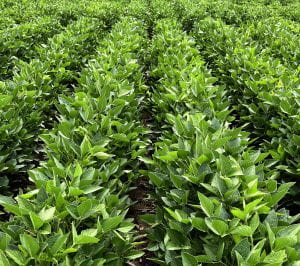Agustin J. Olivo1, Olivia F. Godber1, Kirsten Workman1,2, Karl J. Czymmek1,2, Kristan F. Reed1, Daryl V. Nydam3, Quirine M. Ketterings1
1Department of Animal Science, 2PRO-DAIRY, 3Department of Public and Ecosystem Health Cornell University, Ithaca, NY United States
Introduction
Effective nitrogen (N) management is an essential aspect of productivity and sustainability of corn silage production for dairies. In New York (NY), end-of-season evaluations that consider indicators like N balance (N supply – N removal) and ratio of N removal to N supply can be implemented to assess nutrient use efficiency. Comparing these results with feasible outcomes can help farmers identify opportunities to refine N management over time, and support field experimentation through the NY adaptive N management process. To identify target values for these indicators, characteristics of 994 corn silage field observations across eight NY dairies, together with land grant university guidelines for N management were used to create the “Green Operational Outcomes Domain” (GOOD) assessment framework. The GOOD combines feasible target values for field-level N balances, N removal/N supply, and an indicator related to manure inorganic N utilization efficiency. Indicators were derived using the method outlined in Agronomy Factsheet 125.
Key findings
The GOOD was defined by a 50% minimum N removal/N supply and a 142 lbs/acre maximum balance

The GOOD framework was defined by comparing field N removal and available N supply (Fig. 1). Fields performing inside the GOOD (green area in Fig. 1) have an N removal/N supply that is at least 50%, and a field N balance of 142 lbs N/acre or less. The latter was defined based on the maximum balance that fields in the present dataset would display if managed according to land grant university guidelines. The GOOD was set to identify fields with large N balances and low efficiencies in the context of adaptive N management, without restricting application rates to less than annual P crop removal.
Average farm performance remained within the GOOD, but with large variability
When considering actual farm management practices (“achieved” indicators) across all 994 fields, 66% of observations were within the GOOD and 34% outside. However, there was large variability across the eight farms evaluated. The percentage of fields outside the GOOD ranged from only 1% for one farm (Fig. 2 left) and up to 54% for another farm (Fig. 2 right). The annual averages for achieved available N balance on all farms ranged between 4 and 192 lbs N/acre, and for N removal/available N supply between 38% and 95%.

Manure N use was efficient in this dataset, but with opportunities for refinement
Forty-six percent of observations had spring manure injection or surface application followed by incorporation, whereas 32% received manure application but manure inorganic N contributions were zero (manure was either applied in fall, or in spring with no incorporation within five days). Twenty-six percent of observations were both within the GOOD and had manure inorganic N contributions larger than zero. This shows an overall efficient use of N for corn silage production. For 20% of the observations, manure injection or incorporation in the spring did take place, but the fields fell outside of the GOOD, reflecting opportunities to reallocate a portion of the nitrogen applied to other fields.
Additional graphical tools and indicators complement the GOOD framework well

A series of additional graphical tools and numerical indicators were created to provide farms with more information to identify opportunities to refine N management in corn silage production. For example, one tool helps to identify fields with low yields and high N balances (Q3 in red, Fig. 3). These fields can represent the first target when attempting to refine N management in corn silage.
Conclusions
The GOOD framework is introduced as an end-of-season assessment tool for farms to identify corn silage fields with large N balances and low N removal/N supply. This can be used in the context of the NY adaptive N management process, and/or to identify opportunities for N management refinement over time. On the latter, this study showed that the strategies with largest potential for refining N management and meeting the GOOD feasible targets included reducing N inputs, evaluating non-N yield barriers (e.g. drainage, pests) for fields with low yields and high balances, crediting N contributions from sod, and increasing manure N utilization efficiency (with spring injection or incorporation) and adjusting rates accordingly.
Full citation
This article is summarized from our peer-reviewed publication: Olivo, A.J., O.F. Godber, K. Workman, K.J. Czymmek, K. Reed, D.V. Nydam, and Q.M. Ketterings (2024). Doing GOOD: defining a green operational outcomes domain for nitrogen use in NY corn silage production. Field Crops Research. https://doi.org/10.1016/j.fcr.2024.109676.
Acknowledgements
We thank farmers and their certified crop advisors who shared farm data. This research was funded by a USDA-NIFA grant, funding from the Northern New York Agricultural Development Program (NNYADP), and contributions from the New York Corn Growers Association (NYCGA) managed by the New York Farm Viability Institute (NYFVI), and the Department of Animal Science, Cornell University. For questions about these results, contact Quirine M. Ketterings at qmk2@cornell.edu, and/or visit the Cornell Nutrient Management Spear Program website at: http://nmsp.cals.cornell.edu/.














